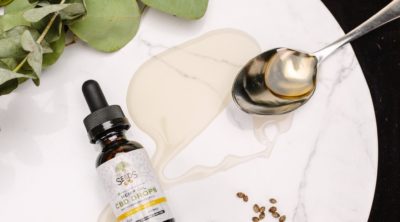
Some people might have a sensitivity to poison sumac, and coming into contact with this plant might cause an itchy, blistering rash. The following article provides some information on the symptoms of an allergic reaction caused by this plant.
Closely related to the poison ivy and the poison oak, the poison sumac is a deciduous plant that grows in extremely wet areas. Scientifically known as Toxicodendron vernix or Rhus vernix, this woody shrub or small tree may attain a height of 30 feet. It usually grows on stream banks, pond edges, marshes, or bogs. These are the areas with wet soil conditions, which as mentioned, is one of the requirements for this toxic plant to grow. It grows in the Eastern United States and Canada. Its leaf stalk is mostly reddish or greenish in color, and the berries are white or gray. Its flowers are yellowish-green in color.
Toxicity
This plant is way more poisonous than its cousins, poison ivy and poison oak. Its toxic nature is attributed to the presence of an oil known as urushiol. This toxic oil is present in the leaves, stems, fruit, roots, or flowers of the plant. When the skin comes in direct contact with any of these parts of the plant, it is known to cause unpleasant symptoms.
Symptoms of an allergic reaction might appear even while handling objects which might have been contaminated with the toxic oil. Apart from this, when burned, the fumes may cause a rash to appear on the inning of the lungs. This may lead to extreme pain and possibly fatal respiratory difficulty.
The characteristic symptoms of the reaction is a rash. The rash usually appears 24 – 72 hours after the plant has come in contact with the skin. The small red bumps develop into painful blisters. These blisters may also appear in a line. The area of the skin that has come in contact with the plant might feel warm. There might be swelling and intense itching at the affected area.
Affected individuals can also experience symptoms such as fever, stomach cramps, nausea, and generalized swelling. Fortunately, this rash in not contagious. The rash can occur only in case of direct contact with the urushiol oil itself and not by the oozing blisters.
Treatment
On suspecting any contact with the plant, one must immediately wash the affected area with plenty of water. It is also important to pat dry the area. You can avail over-the-counter anti-itch treatments that contain zinc acetate, zinc oxide, or hydrocortisone for treating the skin rash, blisters, and itching. If the rash has spread to a larger area, then any delay in seeking medical help would only make things worse. Even the symptoms which seem to persist more than 3 weeks, demand medical attention. At home, you can use the following methods to reduce and relieve the aforementioned symptoms.
- Apply cool compresses with water or milk on the affected area.
- Calamine is also an effective non-prescription lotion that helps in soothing the affected skin and reducing skin irritation and itching.
- While bathing, add one cup of oatmeal to the bath water. Soak the affected area for five to ten minutes. This will help in relieving itching. Alternatively, you can also make a paste of oatmeal with water and apply it on the rash.
- One effective treatment for the poison sumac rash is to apply an aloe vera gel. The liquid helps in reducing inflammation and soothing the irritated skin. You can also mix the liquid in warm bath water.
- Mix a cup of vinegar or buttermilk in warm bath water for fifteen to twenty minutes. Soaking in this water helps in softening the skin and improving the appearance of the affected skin, apart from relieving the itching.
- Applying the gel from the stems of the jewelweed plant right after the skin comes into contact with this toxic plant, may keep the rash from occurring. It may also provide relief from pain.
The severity of the condition depends upon the amount of urushiol oil that has come in contact with the skin. If the symptoms are mild, then all such home remedies are good enough for the treatment. Otherwise, visiting a doctor is recommended.
Disclaimer: The information provided in this article is solely for educating the reader. It is not intended to be a substitute for the advice of a medical expert.


